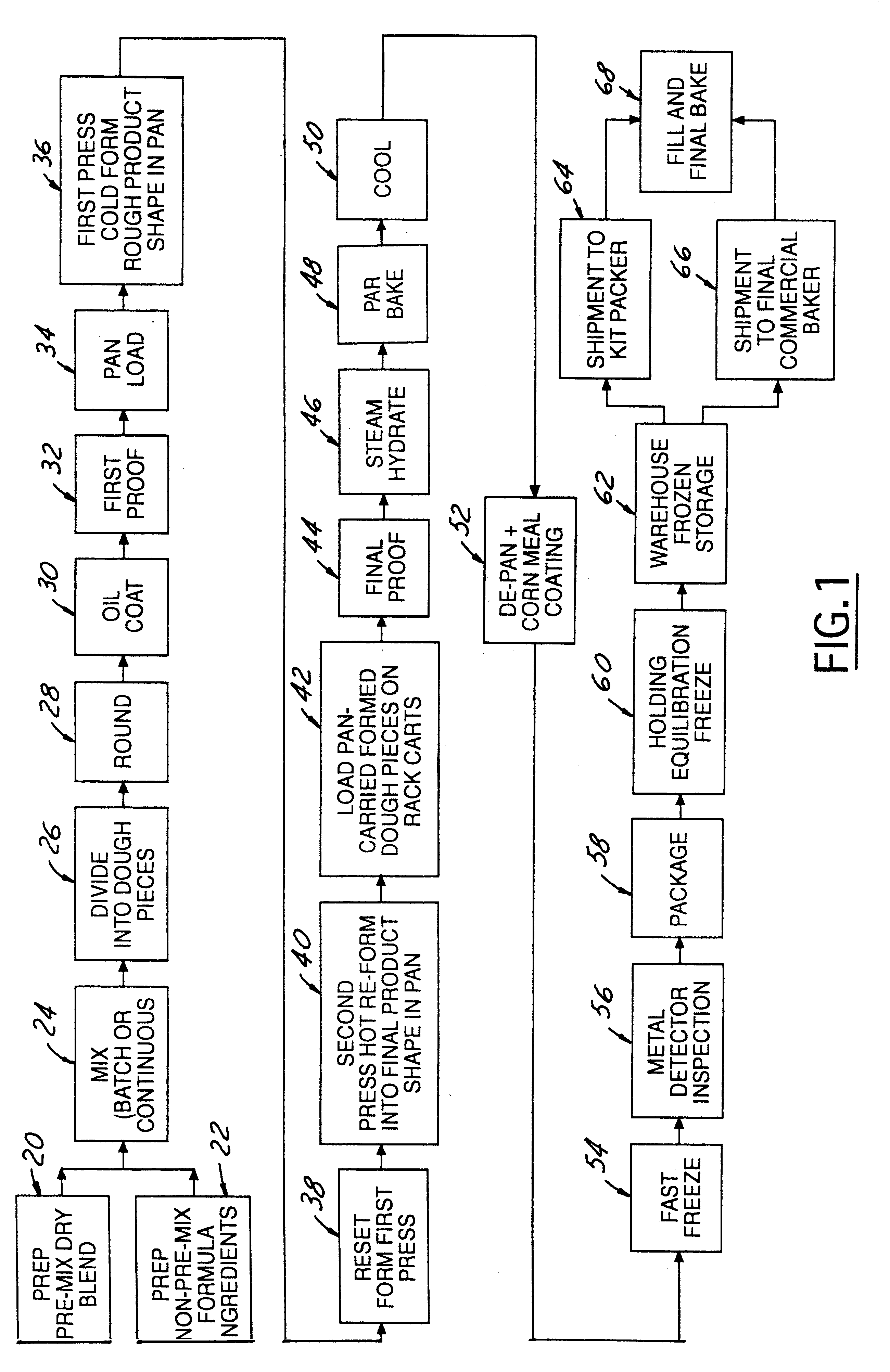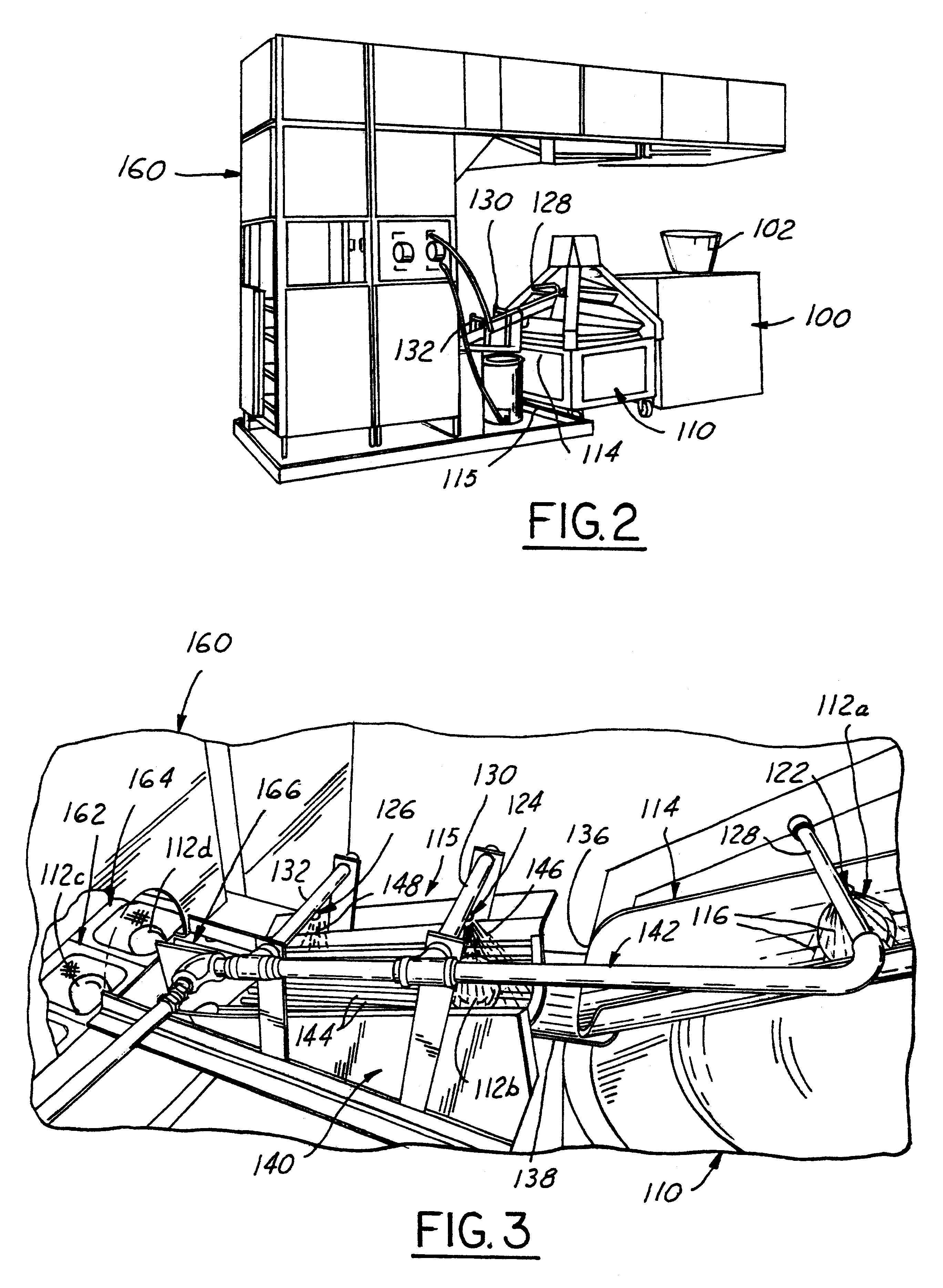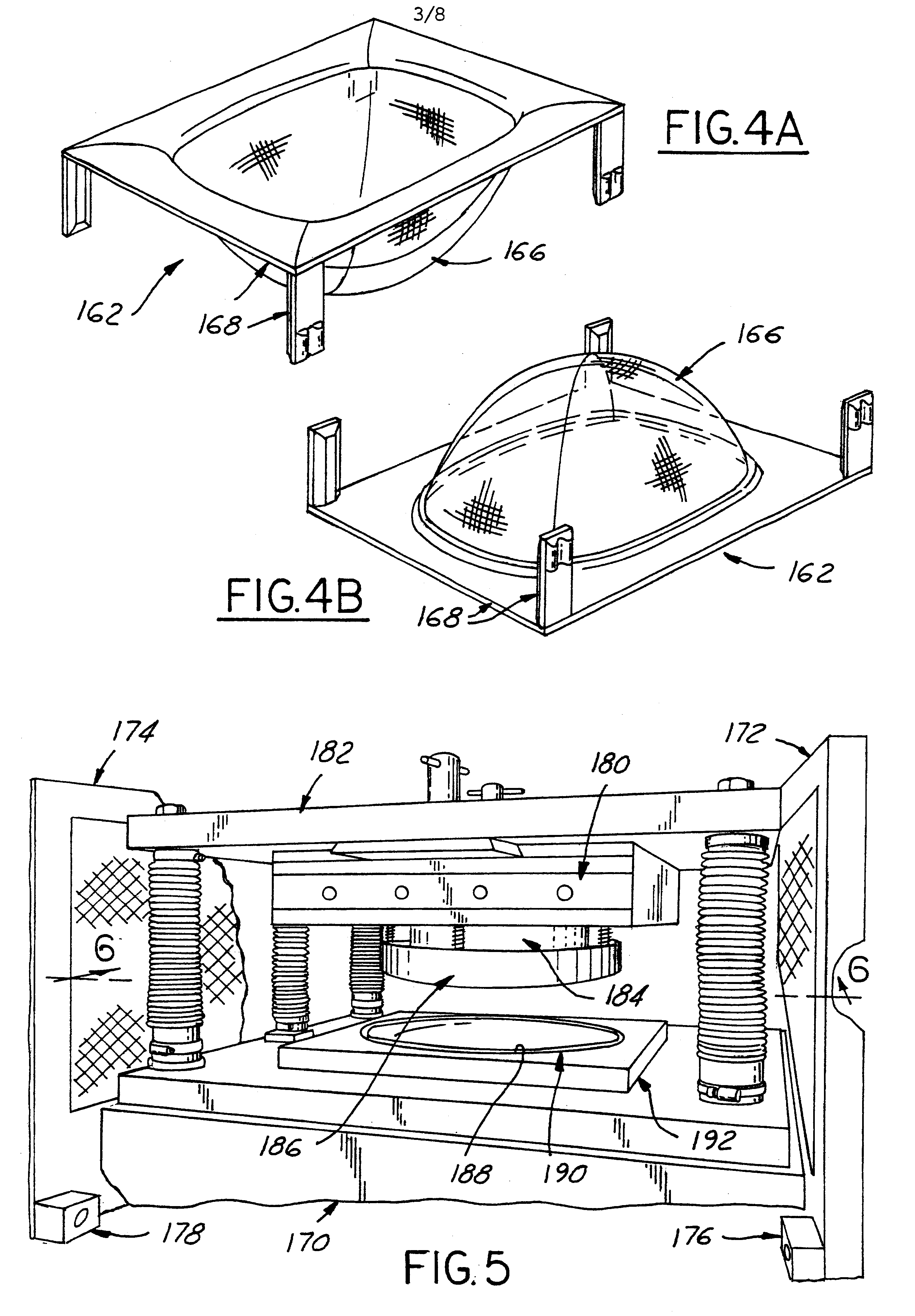Pizza crust and process and apparatus for making same
a technology for pizza and dough, applied in the field of pizza dough, can solve the problems of inability to form, fill and bake in advance, and the simple popular dish presents certain difficulties, so as to improve the appearance and finish, improve the durability, and improve the tas
- Summary
- Abstract
- Description
- Claims
- Application Information
AI Technical Summary
Benefits of technology
Problems solved by technology
Method used
Image
Examples
second embodiment
B. Second Embodiment
A series of different and preferred panning and pressing steps 34, 36, 38 and 40 are schematically illustrated in FIG. 1 using two presses arranged in tandem that sequentially press dough pieces carried in a pan that is initially loaded at the output station of the proofer 160. These presses are specially made "pass-through" modifications of commercially available pizza crust hydraulic forming presses, and are designed for the first to press cold, but the second is modified to press warm. The first pressing is at ambient temperature, whereas the second pressing is set between 260.degree. to 300.degree., depending on the type of crust being manufactured. The dwell times range from 1 to 2 seconds. The pizza-loaded pans are fed by one operator into one side of the press and removed by another operator at the other side of each press. Again, the pressure at each stage is between 200-250 psi.
More particularly, the two stages of pressing are performed with commercially...
first embodiment
7. Cornmeal Sprinkling Step: First Embodiment
In a first embodiment of the process (now superceded), cornmeal is placed on pans by hand sprinkling prior to the dough pieces being placed on the pan and after being single stage warm pressed as described above in Section 6A. The pans are then placed on a ladder rack wheeled cart (not shown) that is rolled into the final proofer shown as step 44 in FIG. 1.
8. Final Proofing Step 44
In both the first and second process embodiments the wheeled carts, when full of racked pans carrying the pressed pizzas, are pushed into the final proofer via the proofer infeed doors provided at one end of the final proofer cabinet. After 20 minutes residence time in the final proofer, the carts are pushed through the proofer cabinet to the opposite output end of the same, where an operator pulls them out for transfer to the hydration steaming step 46. The controls for establishing the final proofer interior proof box environment are preferably set for approxi...
third embodiment
D. Third Embodiment Cornmeal Coating Step 52
FIGS. 14 and 15 illustrate a preferred apparatus 400 for applying cornmeal to pizza shells in a fully automated set-up. Apparatus 400 may be employed between a conventional conveyorized cooling station adapted to perform the cool down step 50 for cooling the parbaked crusts exiting from the parbaking oven down to approximately 90.degree. F. When a cooling station of this nature is provided, the conveyorized shells are de-panned without inversion so that their normal top surface remains as the upwardly facing surface of the shell as it is conveyorized through a cooling station. The pizza shells as so cooled in a cooling station are conveyed on an endless belt input conveyor 402 of apparatus 400 that emerges from the cooling station output end with pizza shells oriented upright. Pizza shells are propelled by the upper run of conveyor 402 onto the input end of the upper run of an endless chain link belt conveyor 406 that is trained around sup...
PUM
 Login to View More
Login to View More Abstract
Description
Claims
Application Information
 Login to View More
Login to View More - R&D
- Intellectual Property
- Life Sciences
- Materials
- Tech Scout
- Unparalleled Data Quality
- Higher Quality Content
- 60% Fewer Hallucinations
Browse by: Latest US Patents, China's latest patents, Technical Efficacy Thesaurus, Application Domain, Technology Topic, Popular Technical Reports.
© 2025 PatSnap. All rights reserved.Legal|Privacy policy|Modern Slavery Act Transparency Statement|Sitemap|About US| Contact US: help@patsnap.com



